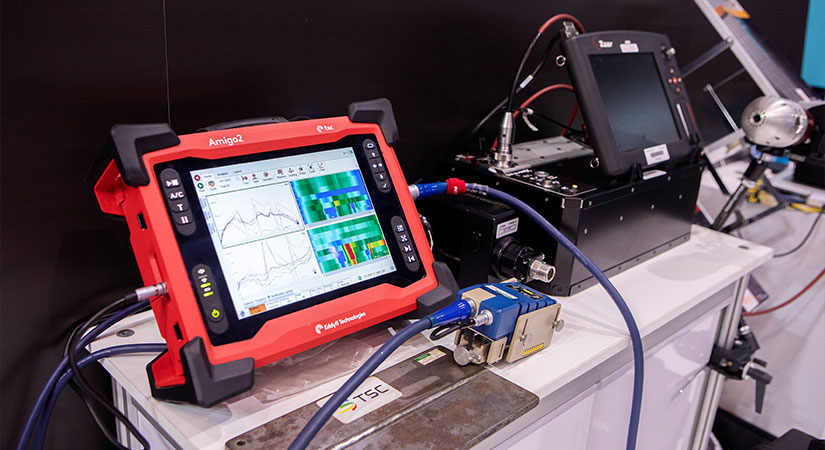In the world of synchronization calibration, understanding the best practices is critical for industry professionals striving for precision and accuracy. As technology advances, the need for efficient synchronization becomes more prominent. This article offers a comprehensive insight into the best practices for synchronization calibration, ensuring your methods are both effective and up to date.

Understanding Synchronization Calibration
Synchronization calibration is the process of aligning systems or devices to function in harmony. This is crucial in industries where precision timing and coordination are paramount. Whether its in calibration tests or other applications, the goal is to ensure that all components operate synchronously for optimal performance.
The Importance of Accurate Calibration
Accurate calibration ensures that equipment and systems perform as expected. Inaccuracies can lead to faulty results, increased downtime, and financial losses. Thus, maintaining accurate synchronization is vital for the integrity of operations.
Challenges in Synchronization Calibration
The primary challenge in synchronization calibration is managing the variability in system behavior. External factors such as temperature, pressure, and environmental conditions can affect synchronization, making it crucial to establish robust calibration protocols.
Key Best Practices
Establish a Calibration Routine
Creating a regular calibration routine helps in maintaining consistency and reduces the risk of errors. It’s important to schedule periodic checks and adjustments to ensure all systems remain synchronized.
Utilize Advanced Tools and Software
Leveraging the latest tools and software can enhance the calibration process. Technologies that offer real-time data and analytics can help in making informed decisions and adjustments swiftly.
Training and Development
Investing in training for personnel involved in calibration processes is essential. Keeping the team updated with the latest techniques and technologies ensures that they can handle any synchronization challenges efficiently.
Role of Frequency in Synchronization
Frequency plays a crucial role in synchronization. Ensuring that all devices operate at the same frequency is critical for achieving desired outcomes. For more details on this, you can refer to the role of frequency in predictive maintenance.
Monitoring and Maintenance
Regular monitoring and maintenance are fundamental to successful synchronization calibration. This involves routinely checking equipment and making necessary adjustments to maintain synchronization over time.
Use of Predictive Maintenance
Implementing predictive maintenance strategies can help anticipate potential failures before they occur. This proactive approach minimizes downtime and enhances overall system reliability.
Documentation and Reporting
Proper documentation and reporting of calibration activities are critical for maintaining a record of changes and adjustments. This helps in tracing any issues back to their roots and ensures accountability.
Standardized Formats
Using standardized formats for documentation ensures consistency and makes it easier to compare data over time.
External Calibration Services
Sometimes, outsourcing calibration to external specialists can provide a fresh perspective and expertise. These experts can bring in advanced skills and technologies that might not be available internally.
Choosing the Right Service Provider
When selecting an external calibration service, it’s important to consider their reputation, experience, and the technologies they use.
Safety Considerations
Ensuring safety during the calibration process is paramount. Proper training and adherence to safety protocols are essential to avoid accidents and ensure a safe working environment. For more information on equipment safety, consider visiting HSE’s inspection guidelines.
Technology Integration
The integration of new technologies into existing systems can significantly enhance synchronization capabilities. Innovations like IoT and AI can provide new opportunities for improving precision and efficiency.
IoT and Real-time Data
The use of IoT devices can provide real-time data, offering insights into system performance and areas that require attention.
Case Studies
Examining case studies of successful synchronization calibration can provide valuable insights and lessons learned. These examples can serve as benchmarks for your own processes.
Industry Examples
Looking at specific industry examples can provide a clearer understanding of how synchronization calibration is applied in real-world scenarios.
Conclusion
In conclusion, adhering to the best practices for synchronization calibration is essential for ensuring operational efficiency and accuracy. By following these guidelines, industry professionals can maintain high standards and achieve optimal performance.

FAQ
What is synchronization calibration?
Synchronization calibration involves aligning systems or devices to operate in harmony, ensuring precision and accuracy in operations.
Why is frequency important in synchronization?
Frequency ensures that all devices operate in sync, which is critical for achieving the desired outcomes and maintaining system harmony.
How often should calibration be performed?
The frequency of calibration depends on the specific industry and equipment. However, regular checks are recommended to maintain accuracy and performance. For more insights, visit Stansomatic’s guidelines.
This article contains affiliate links. We may earn a commission at no extra cost to you.
